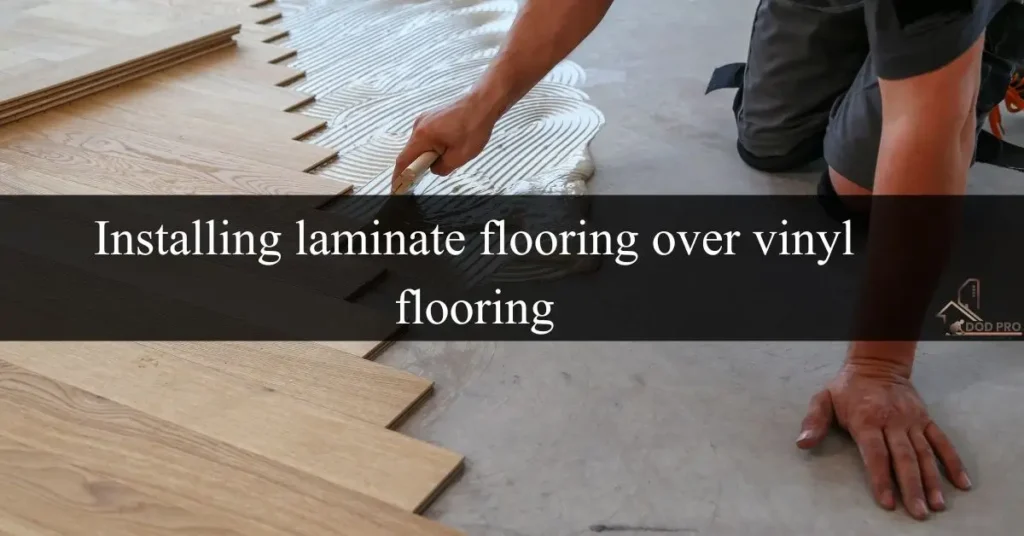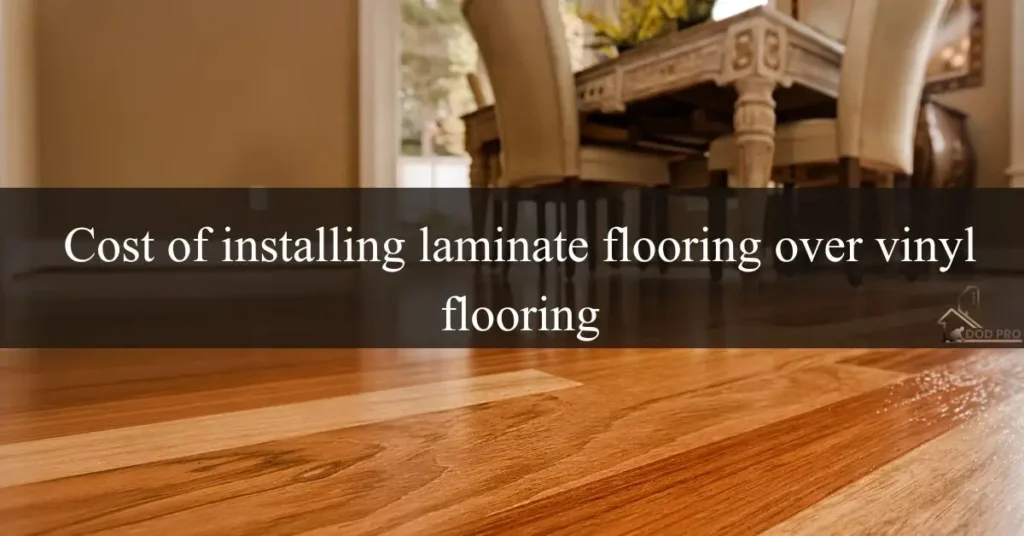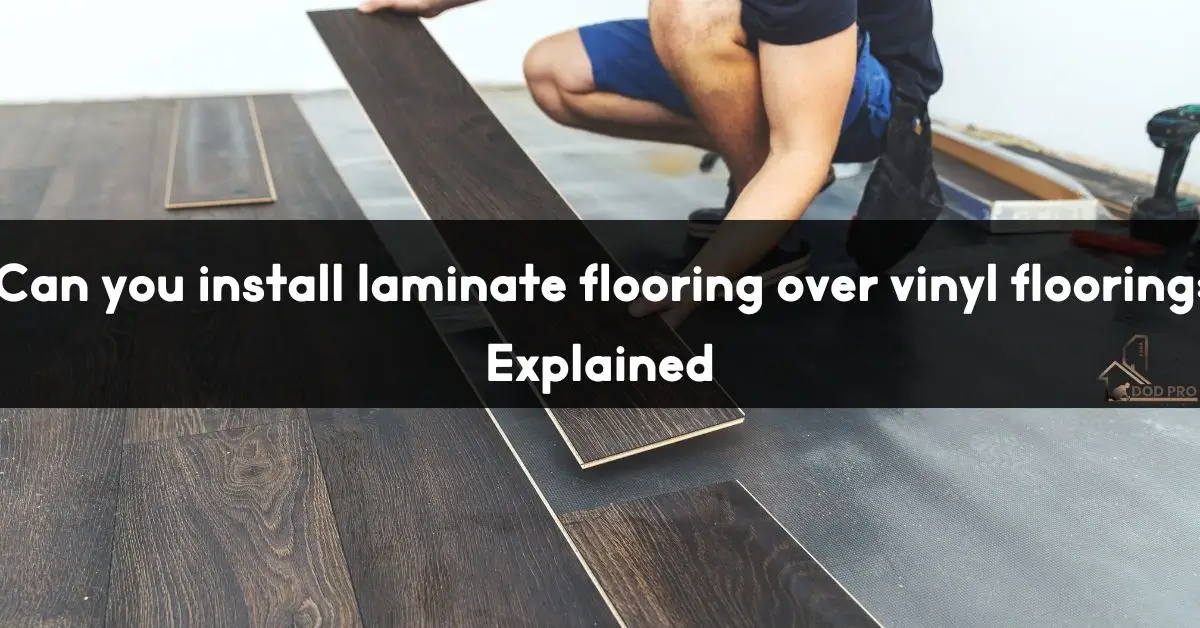When thinking about upgrading your floors, many homeowners wonder if vinyl can be installed over existing laminate flooring. It might seem like an affordable way to get a fresh new look without having to completely replace your floors. But, before you go ahead, there are some key things to think about to make sure the installation goes smoothly and the floor lasts.
In this blog post, we’ll talk about whether it’s a good idea to put vinyl over laminate, what challenges you might face, and give you some helpful tips for getting the best results.
Can you install laminate flooring over vinyl flooring
Yes, you can install laminate flooring over vinyl flooring, but it’s important to make sure the vinyl is in good condition. The surface needs to be smooth and even, as laminate flooring requires a stable foundation. If the vinyl has any issues, like bumps or damage, it’s best to fix those first. Also, check areas that might have high moisture, like around the sink, dishwasher, or refrigerator. If these areas are too damaged or uneven, they should be repaired before installing the laminate to ensure a good, long-lasting result.
Want to know how to install marine vinyl flooring? Click here
Installing laminate flooring over vinyl flooring

When considering installing new laminate flooring over existing vinyl flooring, it’s important to understand how different types of vinyl flooring affect the process. Below are the methods for installing laminate flooring over different types of vinyl flooring
Floating Vinyl Flooring
These floors, like vinyl planks, are not the best surface for installing laminate on top. Floating floors don’t combine directly to the subfloor, which means they can move and shift over time. This can cause the laminate to become uneven, creaky, or unstable. To ensure a long-lasting and smooth finish, it’s usually recommended to remove the floating vinyl floor before laying down laminate. This allows for proper surface preparation and gives the laminate a solid base to adhere to.
Glue-Down Vinyl Flooring
Glue-down vinyl flooring can be a good base for laminate, as long as the vinyl is in good condition. The vinyl should be firmly adhered to the subfloor with no signs of peeling, gaps, or damage. If the glue-down vinyl is secure and stable, laminate can be installed on top.
However, it’s essential to use an underlayment between the vinyl and laminate. The underlayment will:
Provide additional cushioning and comfort underfoot.
Improve sound insulation.
Help level any minor imperfections in the existing vinyl surface. Even with a stable glue-down vinyl surface, using an underlayment will ensure the best performance and durability of the laminate floor.
Sheet Vinyl Flooring
Sheet vinyl, which is installed in large, continuous rolls, can also serve as a suitable base for laminate flooring. As long as the sheet vinyl is well-maintained and in good condition, it can be used to support laminate. The key is ensuring the surface is firm, clean, and free from any damage. An underlayment is also necessary to ensure a smooth, level surface for laminate installation. Additionally, underlayment will offer moisture protection, which is especially important in areas like kitchens or bathrooms where humidity levels are higher.
Other Important Considerations
Below are some important considerations:
Surface Preparation:
No matter which type of vinyl you have, make sure the surface is clean, dry, and free from dust, dirt, and debris before installation. Even the best-quality laminate flooring won’t perform well if the surface beneath it is not properly prepared.
Moisture Concerns:
Vinyl flooring is generally moisture-resistant, but if your vinyl has been exposed to excessive moisture over time, it could affect the condition of the subfloor. In this case, removing the vinyl might be the best option to prevent issues like mold or mildew from affecting your new flooring.
Leveling the Surface:
If the vinyl has any visible imperfections, bumps, or dips, they may affect the laminate flooring’s performance and appearance. Using a leveling compound can help create a smoother base for the laminate.
By following these guidelines, you can ensure a successful and lasting flooring upgrade. Whether you’re updating your home’s look or improving its functionality, understanding how each vinyl type interacts with laminate flooring will lead to better results.
Cost of installing laminate flooring over vinyl flooring

The total cost of installing laminate flooring over vinyl is listed below. We’ve included all the important factors in our calculations, but keep in mind that these costs may change based on your needs
Cost of Laminate Flooring
Cheap Laminate:
$1 to $2 per square foot. It’s basic and may wear out faster.
Mid-Range Laminate:
$2 to $4 per square foot. It’s more durable and has better designs.
High-End Laminate:
$4 to $6 per square foot. This is the best quality, with features like water resistance.
Labor Costs
Installation usually costs between $1.50 and $4 per square foot, depending on where you live and how difficult the job is.
If the room has a lot of corners or special features, the price could go up.
Preparing the Floor
Vinyl Condition:
If the vinyl flooring is in good condition and flat, you can install laminate directly over it.
Repairs:
If the vinyl has damage or uneven spots, you’ll need to fix it first, which could cost extra.
Underlayment (Padding)
You need padding under the laminate for comfort and soundproofing. It costs about $0.30 to $0.75 per square foot.
Other Costs
Trim and Molding: If you need new baseboards or moldings, these usually cost $1 to $3 per foot.
Removing Old Vinyl: If the old vinyl has to be removed, that can add $1 to $3 per square foot.
Total Costs
For a small room (like a bedroom), expect to pay between $350 and $1,200.
For a larger room (like a living room), it could be $1,000 to $3,500, depending on what you choose.
Tips for Saving Money
DIY:
If you’re comfortable with tools, you can install the laminate yourself to save on labor.
Bulk Buying:
Buying materials in bulk might save you money.
Get Multiple Quotes:
Ask a few installers for quotes to find the best price.
Want to know if you can install vinyl flooring over hardwood? Click here to find out
Conclusion
Installing vinyl over laminate flooring can be a good option if the vinyl is in good condition. The surface should be smooth, flat, and free of damage to ensure a proper installation. Using an underlayment is important for added comfort and durability. Depending on the type of vinyl—floating, glue-down, or sheet vinyl—you may need to follow different steps, but the key is making sure the surface is clean and level. While this method can save money, if the vinyl is damaged or uneven, it’s best to remove it before installing the new floor. With the right preparation, you can enjoy an updated, durable, and cost-effective floor.
FAQs
Q1. Can you install laminate flooring directly over vinyl?
A: Yes, you can install laminate flooring over vinyl as long as the vinyl is in good condition. The surface must be smooth, level, and free from damage. Using an underlayment is also recommended for better performance.
Q2. What types of vinyl flooring can laminate be installed over?
A: Laminate can be installed over glue-down and sheet vinyl, but floating vinyl (like vinyl planks) is not ideal because it can shift and cause instability. In such cases, it’s better to remove the floating vinyl before installing laminate.
Q3. Do I need to prepare the vinyl before installing laminate?
A: Yes, surface preparation is essential. The vinyl should be clean, dry, and free of dirt or debris. If the vinyl has any damage or uneven areas, it’s important to repair them before laying the laminate to ensure a smooth and lasting installation.


